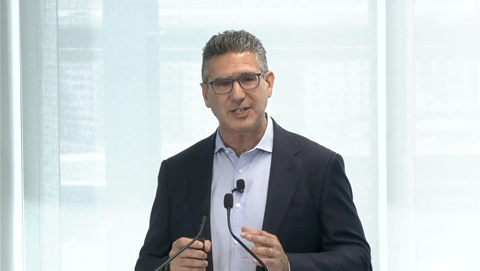While very few organisations were armed with a pandemic response plan pre-Covid, some had developed a business continuity plan that gave them structure when the crisis hit.
One such organisation was the Australian Securities Exchange (ASX).
Digital Nation Australia spoke to the ASX’s group executive of human resources, Lisa Green, and CIO Dan Chesterman about how its crisis management plan assisted in responding to the disruption.
According to Green, having already seen the beginnings of the pandemic emerge in Hong Kong, over the Christmas period in late 2019, a subset of the crisis response team were meeting regularly to determine how the ASX could continue to keep markets open should the organisation be forced out of the office.
“From very early in January we as an organisation were starting to run drills. So for example, with my team, I made sure that my payroll team could run the payroll outside of the office. And so we were starting to do that anyway, in anticipation of just making sure that we could all work remotely if need be. And needless to say on the 16th of March we sent everyone home and people really haven’t been back since. And that was in 2020,” said Green.
While the emergency response plan was not specifically geared towards a pandemic, it did relate to remote work should an attack, like that of the Lindt chocolate shop siege in 2014 should occur, which was located on the doorstep of the ASX.
According to Green, the plan included running frequent simulated drills to ensure that the business, including its data centre could be run remotely in the event of office closures.
“By the time we actually got to a pandemic, what we were able to do is look very quickly at a document that had been put in place, not necessarily for a pandemic, but had been put in place for a crisis that would require all of us to not work in the office.”
Despite the preparedness of the ASX, the shift to remote work was not as easy as simply asking workers to take their laptops home. According to CIO Dan Chesterman, the business had to invest in its digital capabilities to ensure that staff had the capacity to dial in remotely.
According to Chesterman, “So we did run a couple of simulations where we got first 20, then 30, then 50 percent of that staff to log in over a weekend to make sure that we did have the necessary capacity.”
ASX created a new gateway in a cloud provider in order to scale up the mobile path, which assisted in shifting to 95 percent of the business to work from home in just one weekend, he said.
“The key piece was actually that cloud-based connectivity entry point.”
Chesterman also recounts that the ASX was using “2000s era video conferencing” which they needed to rapidly adjust to enable collaboration across teams. While the technologies were easy enough to onboard, it was the habits, he said, that proved to be the most challenging.
“I think the habits that are harder to form, that have been established in teams that have already worked in distributed ways, is how to do it in a way that's not intrusive? How to get the balance right between, when do you call? When do you send a message? When do you send an email? When do you use a chat function?”
“Because I think there is ways that you can become more efficient using these technology and collaborative approaches, which rely on asynchronous communication rather than always having to call a meeting. And I think that's something that we're still working on.”
Case Study: How the ASX’s emergency response plan kept markets open in a crisis
Prepared in the face of a pandemic.
Got a news tip for our journalists? Share it with us anonymously here.
© Digital Nation




.png&h=140&w=231&c=1&s=0)
.png&h=140&w=231&c=1&s=0)



.png&w=100&c=1&s=0)

 iTnews Benchmark Security Awards 2025
iTnews Benchmark Security Awards 2025
 Digital Leadership Day Federal
Digital Leadership Day Federal
 Government Cyber Security Showcase Federal
Government Cyber Security Showcase Federal
 Government Innovation Showcase Federal
Government Innovation Showcase Federal
 Digital NSW 2025 Showcase
Digital NSW 2025 Showcase












_(1).jpg&h=140&w=231&c=1&s=0)



